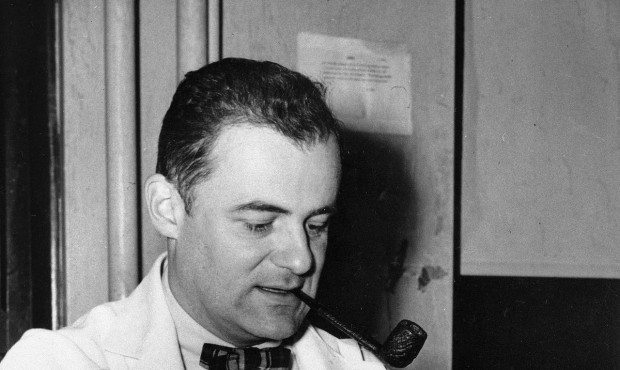Saved from Sandy: Shorebird efforts are declared a success
May 24, 2015, 12:18 PM

In this Monday, May 11, 2015 photograph, Shane Godshall of the American Littoral Society holds a pair of horseshoe crabs in the Reeds Beach section of Middle Township, N.J. A mainstay for shorebirds, migrating horseshoe crabs affect the numbers of shorebirds returning to the Delaware Bay region. A crash program to restore New Jersey bay and ocean beaches wrecked by Superstorm Sandy appears to have succeeded in saving tens of thousands of shorebirds that otherwise might have died after the 2012 storm wiped out their feeding grounds. (AP Photo/Mel Evans)
(AP Photo/Mel Evans)
MIDDLE TOWNSHIP, N.J. (AP) — A crash program to restore New Jersey bay and ocean beaches wrecked by Superstorm Sandy appears to have succeeded in saving tens of thousands of shorebirds that otherwise might have died after the 2012 storm wiped out their feeding grounds.
It’s a rare feel-good story in which scientists, volunteers and layers of government worked together to restore habitat, particularly along the Delaware Bay, that was ravaged by Sandy. With the birds now returning en masse for a third spring after the storm, those involved feel they can finally say the urgent efforts have worked.
Just months after Sandy hit, huge earth movers were dumping tons of sand on eroded beaches and bulldozers were spreading it out in a race against time before the next wave of migratory shore birds arrived in the spring. The birds stop at the Delaware Bay beaches in the middle of their annual 10,000-mile journey from South America to the Arctic.
The main food for the threatened red knot is horseshoe crab eggs, but Sandy wiped out many of the beaches where the crabs breed. That prompted a near-panicked effort to replace what the storm took.
“It was a crisis response, but this is a real success story,” said Tim Dillingham, executive director of the American Littoral Society, one of the lead groups on the project. “The beaches are holding up, the crabs are using the beaches, and the birds are eating the crab eggs. That’s exactly what we hoped for, the best possible outcome.”
“I am elated,” added Larry Niles, a wildlife biologist who helped lead the program for the past three years and is not inclined to hyperbole.
He said that efforts to count red knots vary by method, but that tabulations conducted by his group as well as by the U.S. Fish & Wildlife Service both show the population holding stable, if not growing very slightly, since Sandy.
The effort has drawn volunteers from as far as Australia.
“If those beaches hadn’t been restored right after Sandy, we would have seen everything on a steep downward curve,” said Clive Minton, of Melbourne, who has traveled to New Jersey each spring for the past 19 years to help catch and count red knots. “It is really satisfying to see these conservation measures have an effect.”
The birds start their journey at the southern tip of South America and make a stopover of a few weeks at the Delaware Bay, home to the Western Hemisphere’s largest population of horseshoe crabs. The crabs’ eggs are a main food source, easily metabolized into the fat that will sustain them on the second half of their trek to the Arctic, where even after landing, they will have to wait two to three weeks for food to become available. While in New Jersey, the birds more than double their weight.
The red knot hit its low point in 2004, as commercial harvesting was decimating the population of horseshoe crabs. In addition to being used as bait, the crabs are milked for a substance in their blood that’s useful to the pharmaceutical industry. New Jersey has since banned horseshoe crab harvests.
The restoration of Delaware Bay beaches succeeded in widening the habitat for the crabs to lay eggs and for birds to land and chow down. Tidal flats have formed along the coast that are perfect for both activities.
And a few miles to the east, New Jersey Audubon and the U.S. Fish and Wildlife Service have restored nesting grounds for endangered shorebirds on a stretch of vulnerable ocean beach in Stone Harbor. The site got wiped out during Sandy, and even afterward would flood during much lesser storms. The work raised the nesting grounds for the endangered piping plovers and other species.
The Stone Harbor Point site also uniquely complements the Delaware Bay beaches; it is where the red knots go for a few hours a day when their feeding grounds on the bay side are covered by the tides, said David Mizrahi, vice president of research for New Jersey Aububon.
“If Sandy hadn’t wreaked havoc on these prime ecological resources, there probably wouldn’t have been the will to do this restoration,” he said. “It has greatly improved things. For migratory shorebirds, it really puts things on the right trajectory.”
___
Wayne Parry can be reached at http://twitter.com/WayneParryAC
Copyright © The Associated Press. All rights reserved. This material may not be published, broadcast, rewritten or redistributed.








